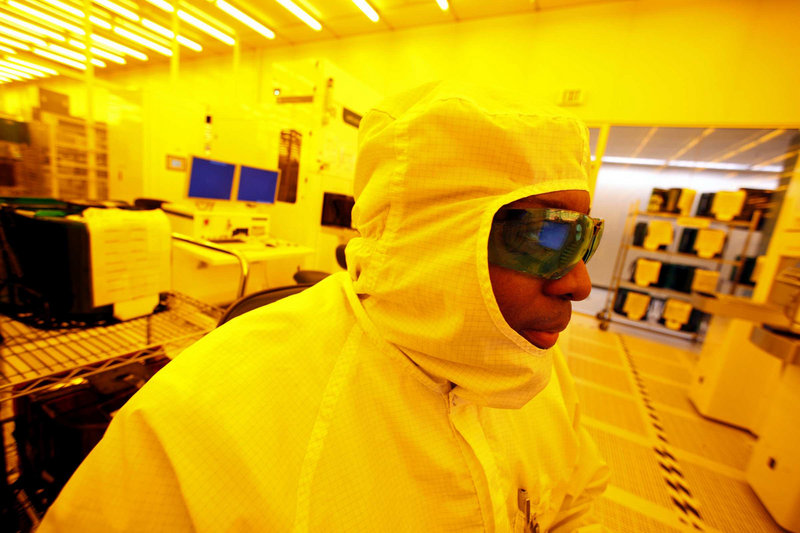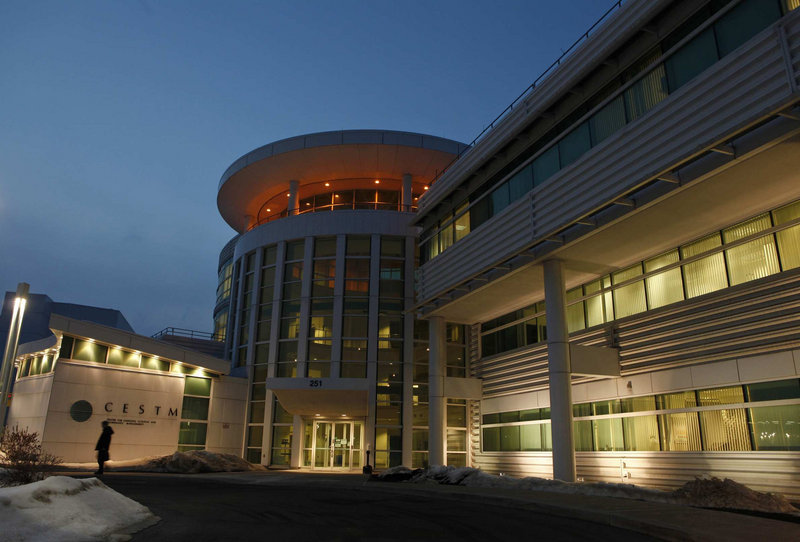ALBANY, N.Y. – If there’s hope for 51-year-old Brett Miller, then you could say there’s hope for the American dream.
When Miller was a boy, upstate New York and the Hudson River Valley embodied the industrial might of the nation and the broad-based prosperity that made middle-class families such as Miller’s the envy of the world.
For 40 years, his father earned a good living from the sprawling General Electric Co. complex in Schenectady, N.Y., that built steam turbines for the nation’s electric power companies and nuclear engines for its submarines. When he retired, he had a comfortable pension.
No such dependable future awaited the younger Miller. A wave of corporate downsizing in 2009 abruptly ended his career in marketing, and he’s been unemployed ever since.
“I’m starting over,” Miller said.
What gives Miller hope — and what could point the way for economic revitalization elsewhere in the United States — is an effort here to test an idea that many gave up on years ago: making things.
For several decades, prominent economists and business leaders argued that so long as Americans came up with the ideas for great new products, it didn’t matter where the products were manufactured.
Today there is a growing sense that the nation’s lack of production capability is an Achilles’ heel. In this view, the country must regenerate its manufacturing base — not necessarily producing the same things it made in bygone years, but churning out high-value goods that can compete on price and quality in today’s global marketplace.
Already, manufacturing has played an unexpectedly strong role in a recovery from the recession. Signs of renewal can be seen in many parts of the country.
In Detroit and Cleveland, the long-moribund auto industry is showing surprising strength. In Boston and Chicago, metal fabrication shops are busy again. And in the San Francisco Bay Area and Austin, Texas, high-tech manufacturing is on the upswing.
The effort in the Hudson Valley represents something new: an unusual partnership between government and private enterprise. And because it is no mere government bailout of a flagging industry and focuses on high-tech, future-oriented products, this initiative has potentially greater staying power.
If it succeeds, what’s happening in upstate New York could help the whole country meet one of its most difficult challenges: re-creating the kinds of secure, long-term middle-class jobs that have long been the foundation of American prosperity.
Unless such a revitalization takes place, most economists agree, millions of people will face a more volatile and less prosperous future. And as consumers’ ability to spend erodes, so will the prospects for corporate America.
It also will be extremely difficult for the country to deal with government deficits and the soaring cost of such fundamental programs as Social Security and Medicare.
The catalyst for change in Albany is an unlikely physics-professor-turned-empire-builder, Alain Kaloyeros, who heads the College of Nanoscale Science and Engineering at the University at Albany.
Kaloyeros, 55, is not your ordinary public servant. He drives a black Ferrari F430 Spider, quotes “Forrest Gump” and wears bleached jeans with holes in them. Yet the state pays him a salary four times the size of the governor’s because Kaloyeros has done more than build his obscure college into a powerhouse for research with applications for electronics, medicine and other industries.
He has also made the school, part of the State University of New York, a magnet for forward-looking industries across the region.
About 250 companies, including such major high-tech firms as IBM Corp., Samsung Electronics Co. and Applied Materials Inc., have provided $6 billion to the school for equipment, labs, clean rooms and other resources. Kaloyeros has persuaded New York state to kick in nearly $1 billion more.
At the same time, the promise of what the research center can contribute to developing fresh products and technologies is attracting new manufacturing plants.
Next year, Silicon Valley chip maker Advanced Micro Devices Inc. will open a $4.6 billion semiconductor factory in Luther Forest, about 20 miles north of Albany. The two-story facility, with a clean room the size of six football fields, is the first major chip plant built in the country in a decade.
The U.S. share of global chip-production capacity, practically 100 percent in the 1970s, has been sliding for years — down to just 14 percent in 2009. The domestic industry’s workforce has shrunk 45 percent in the last decade.
The Albany plant is expected to employ about 1,400 workers, many of them $40,000-a-year technicians and equipment operators.
In about a decade, the college has grown from 70 researchers and staff working inside a single building to 2,600 employees spread out across a sprawling campus. Its engineers operate $60-million lithography tools, and rival companies are working together on research projects in a way that was once unthinkable.
Kaloyeros hopes his mix of public and private, competitive and cooperative effort will reduce the flow of investment and jobs to countries such as China — revitalizing American manufacturing and with it the U.S. economy.
So he keeps pressing.
“There’s never an end zone,” he said. As in the movie “Forrest Gump,” he added, “You keep running, like Tom Hanks.”
The same spirit seems to have infected Miller. Casting aside years of experience in his former field, he’s toiling through a backpack full of math and science textbooks for classes at Hudson Valley Community College.
His goal: to land a more dependable job at AMD’s new plant or secure one of the growing number of other manufacturing jobs opening in the area.
“I’m trying to be confident,” he said recently after a long day of studying for final exams. “I hope to God all this time spent is going to be good.”
Copy the Story Link
Send questions/comments to the editors.




Success. Please wait for the page to reload. If the page does not reload within 5 seconds, please refresh the page.
Enter your email and password to access comments.
Hi, to comment on stories you must . This profile is in addition to your subscription and website login.
Already have a commenting profile? .
Invalid username/password.
Please check your email to confirm and complete your registration.
Only subscribers are eligible to post comments. Please subscribe or login first for digital access. Here’s why.
Use the form below to reset your password. When you've submitted your account email, we will send an email with a reset code.